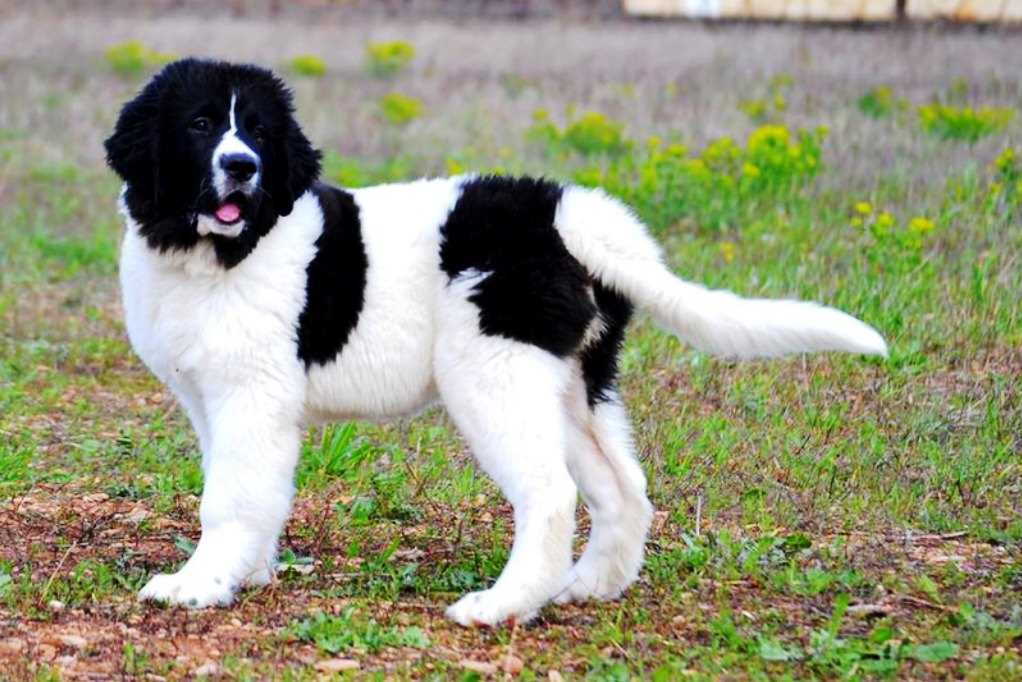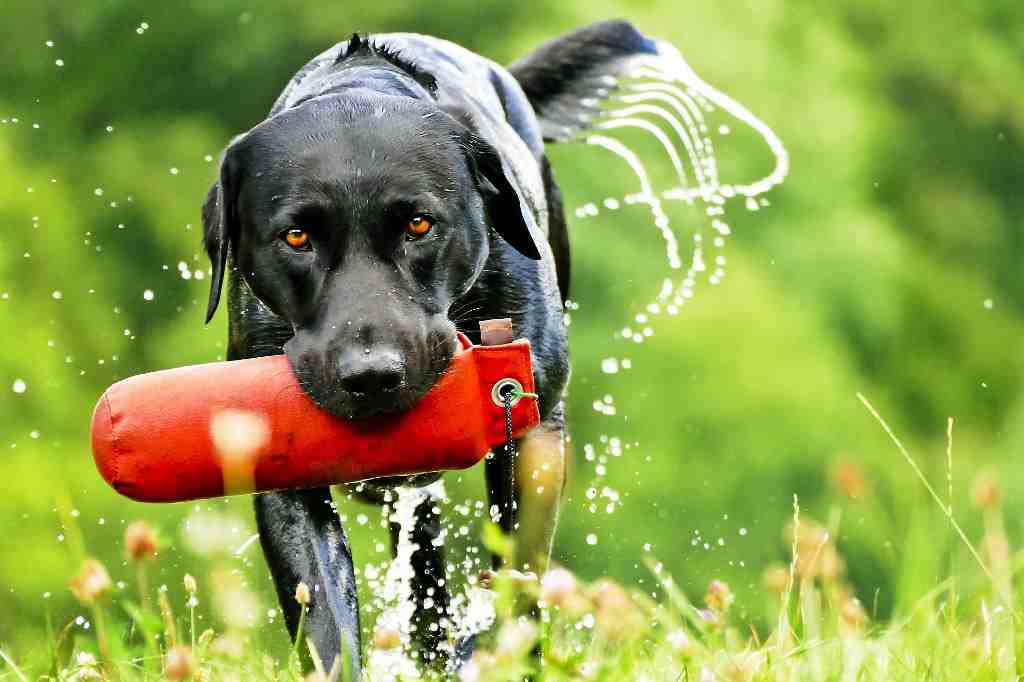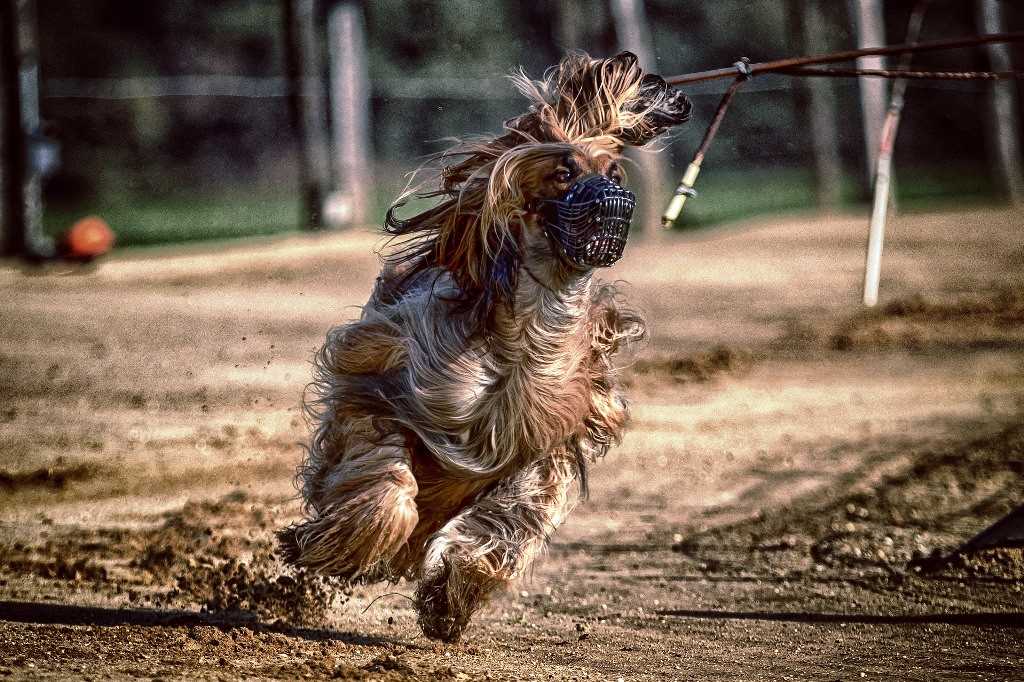The origins of the Landseer dog breed still remain highly controversial; for some it comes from Scandinavia, for others from Canada. Certainly given its fur it comes from the north. As can be seen from the photos, the Landseer looks very much like the Newfoundland, except for the coat, which in the Newfoundland is completely black, whereas in the Landseer it is white and black in spots.
However, the Landseer and the Newfoundland and also the Pyrenean mountain dog are thought to have common ancestors.
At first it was thought that the Landseer was a sub-species of the Newfoundland, then it was noted that genetically it would be impossible for any Landseer to come all black. Arriving in England following the British navigators, this imposing water-loving dog immediately attracted great interest, especially from the nobility and the upper middle class.
Its name derives from the name of a London painter Sir Landseer, who portrayed it several times in the black and white tones that distinguish the breed. The Landseer is known in Norway, Sweden, Scandinavia, Germany and Switzerland, elsewhere it is virtually unknown.
The selection of today’s Landseer was started by the Germans after the First World War from the few remaining specimens in Germany and Switzerland when the breed was about to disappear, supplanted by the Newfoundland with which it is still often confused. Now the only countries breeding the Landseer are Germany and Switzerland.
Character of the Landseer dog breed
The Landseer is ‘a loyal companion’. It loves company, and knows how to show its affection to the whole family, both big and small. He is water-loving, loyal, tame, serious and intelligent. As a character, he is rather reserved and austere, but he is by no means aggressive and never barks, although he is an excellent guard dog. He likes exercise, but is also fond of idleness. He has no problems with other animals that he may find in the house, be they dogs, cats, or others.
It can also live in a flat, as long as it has some space to itself, however, given its size, a garden where it can spend several hours outdoors is ideal. In the home it is a very clean animal, does not stink and drools very little. It has a calm character and does not get angry easily. He is affectionate, although he is not very prone to great outbursts of affection or liveliness. He loves being with children, towards whom he has a lot of patience.
He is very fond of water, even cold water, and of nature; he likes to swim and walk in the woods and lives well especially in cold climate zones. He tends to snooze, so it is good to urge him on if you want a dynamic dog. At home he is so quiet that one sometimes forgets he is there.
Training a Landseer is quite easy as this is a calm and placid dog that shows no signs of aggression. Once educated, it always tends to listen to its owner without any hesitation.
Appearance of the Landseer dog breed
The Landseer is a large dog with an imposing size. The male at withers ranges from 72 to 80 centimetres and weighs 60 to 75 kilograms. The female is rather smaller: between 67 and 72 centimetres for a weight of 50 to 55 kilograms. Another difference between the two sexes is in the muscular power of the limbs, very muscular for males, longer for females.
It is by no means clumsy, on the contrary it shows harmonious curves and well-proportioned dimensions. It is a robust dog, resistant and able to protect itself from the harshest weather conditions, due to its coat, which is very thick and water-repellent.
Physically, it is the same as the Newfoundland, with the exception of the coat, which in the Landseer is white and black, mottled, whereas in the Newfoundland it is completely black. The limbs of the Landseer are longer and more temperamental, the Newfoundland is more expansive and playful. In contrast to the Landseer, the Newfoundland is not a guard dog.
Its skull is broad and massive, covered with a thick layer of short, fine hair. Its wall is well proportioned and ends in a black-coloured truffle. The eyes are medium-sized, almond-shaped and dark in colour. The ears are triangular in shape, but with a rounded lower tip. The tail is covered with a fairly thick coat. It is normally carried low, but when the dog is on the move or in a state of excitement, it is carried long, in line with the hock and slightly pointing upwards.
The coat is long and thick, and it also has a thick undercoat, which, when combined, keeps the dog from suffering in cold temperatures that drop below freezing. The typical colour of the Landseer is predominantly white with black patches along the trunk. Normally white are the neck, chest, legs, belly and tail, while the head is black with a white central line that continues along the muzzle, which is also white.
Health and care of the Landseer dog breed
The Landseer is a dog that enjoys good health and whose average life span is around 12 years. It is robust and is not prone to developing congenital diseases for the breed, however, being a large animal it is not immune to certain diseases such as hip dysplasia, heart disease and stomach torsion. With regard to coat care, this needs a weekly brushing; it must be protected from heat, while cold is not a problem. Its diet must be balanced and it must exercise otherwise it can put on weight quickly.


